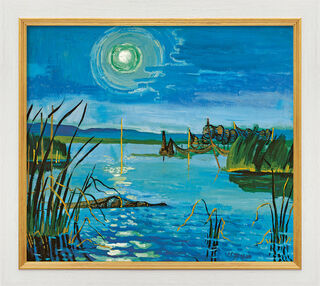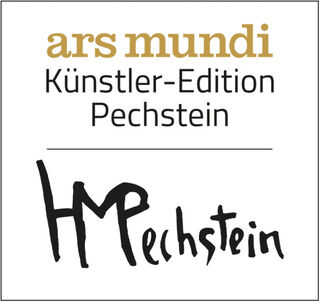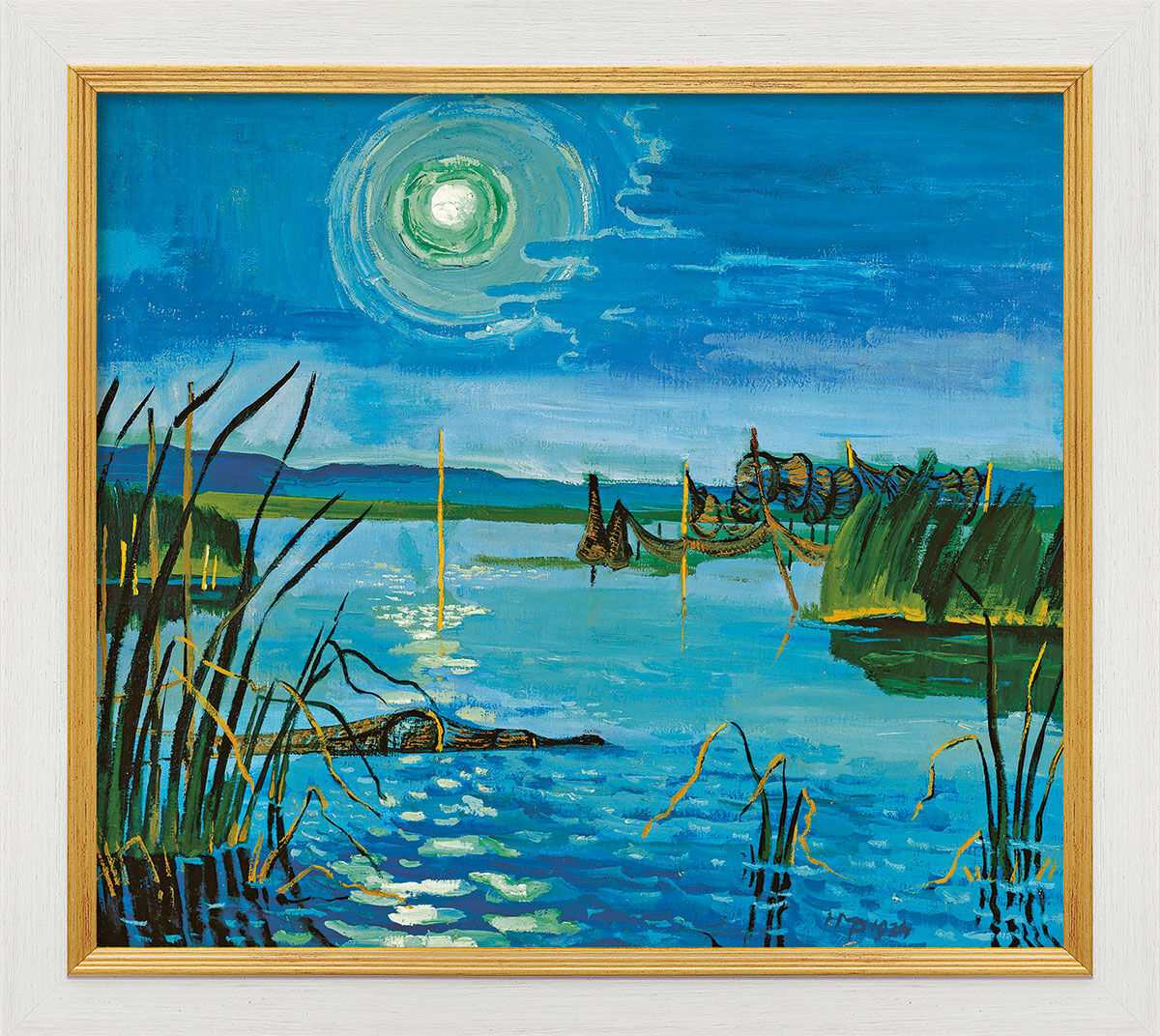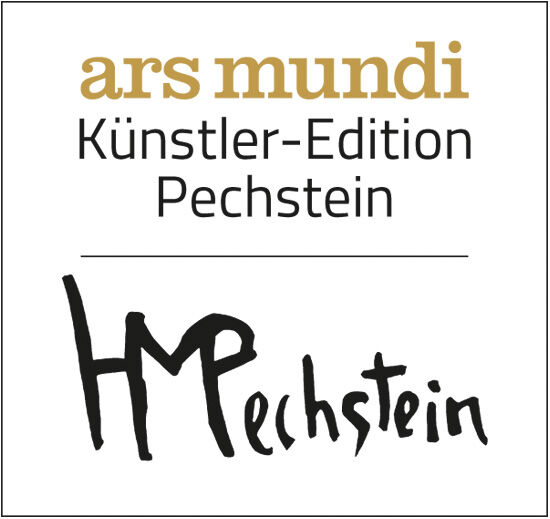Picture "At Lake Garder" (1924), white and golden framed version


Picture "At Lake Garder" (1924), white and golden framed version
Quick info
ars mundi Exclusive Edition | limited, 199 copies | numbered | certificate | reproduction, Giclée print on canvas | on stretcher frame | framed | size 51 x 57 cm (h/w)
Video
Detailed description
Picture "At Lake Garder" (1924), white and golden framed version
For more than two decades, Max Pechstein spent his summers in Hinterpommern which was a constant in his life, contrasting with his otherwise predominantly urban existence in the capital city of Berlin. His artistic fate was deeply volatile, marked by both early fame and the consequences of the political situation starting in 1933.
Pechstein was not only fascinated by the landscape around Leba and the nearby Lake Garder but especially by the people of the region, whom he accompanied in their everyday lives. Thus his depiction of the serene lake is interspersed with traces of human labour: Nets and fish traps bear witness to how the Pomeranian fishermen, closely engaged with nature, went about their lives against this magnificent backdrop. In this picture, which shows the view of Lake Garder from Rowe towards the south, he atmospherically captured the shimmering sunlight with reflections in the water.
Original: 1924, oil on canvas, 70 x 80 cm, Kunstsammlungen Zwickau Max-Pechstein-Museum (loan from a private collection).
Edition transferred directly onto artist's canvas using the Fine Art Giclée process and stretched on stretcher frame. Limited edition 199 copies, numbered, with certificate. Stretcher frame size 43 x 49 cm (h/w). Framed in a white-golden solid wood frame. Size 51 x 57 cm (h/w). ars mundi Exclusive Edition. © 2023 Pechstein Hamburg/Berlin
Frame configurator
Customised picture frame

Frame configurator
Customised picture frame






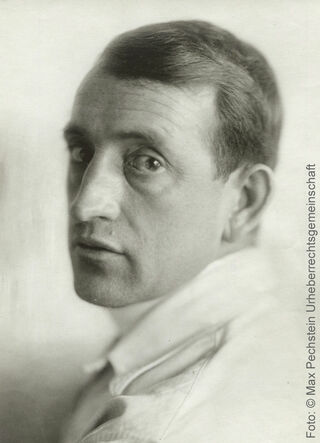
About Max Pechstein
1881-1955
Max Pechstein is considered today, as he was then, one of the most important representatives of German Expressionism. In spring 1906, he joined the artists' group "Die Brücke", which had been founded the previous year by Kirchner, Heckel, Schmidt-Rottluff and Bleyl. In the field of graphic art, he produced an oeuvre of over 850 woodcuts, lithographs and etchings in addition to his paintings.
What Tahiti was to Paul Gauguin, the Baltic Sea coast was to Max Pechstein: a paradise where he found peace, but above all great inspiration. From 1909 onwards, he travelled several times to Nidden on the Curonian Spit, where Lovis Corinth had worked as a young art student more than a quarter of a century earlier. However, when the Treaty of Versailles placed the Curonian Spit under Allied administration in 1920, the way there was blocked. In his own words, Pechstein had to "once again go in search of a spot of earth that was not overrun by painters, tourists and bathers". He found it in Leba, where from then on he spent his summers on a regular basis.
"For more than twenty years Max Pechstein went to the Baltic coast every summer, first to the Curonian Spit, then to Pomerania, which naturally connected him closely to our house. When he rented a room here with his first wife in 1921, he had no idea how attached he would soon feel to the small harbour town of Leba, for he fell in love with Marta Möller, the daughter of his innkeeper. The pristine nature with its beach lakes and the fishing boats in the harbour, the pipe in his mouth, tanned and the anchor tattooed, those things stayed with the passionate angler Pechstein until the end of his life, even when he and his wife could no longer go to Pomerania after the Second World War." (Dr. Birte Frenssen, Deputy Director at the Pomeranian State Museum in Greifswald)
Graphic or sculpture edition that was initiated by ars mundi and is available only at ars mundi or at distribution partners licensed by ars mundi.
Artistic movement that replaced Impressionism in the early 20th century.
Expressionism is the German form of the art revolution in painting, graphic art and sculpture, which found its precursor in the works of Paul Cézanne, Vincent van Gogh and Paul Gauguin in the late 19th century. The Expressionists attempted to advance to the primal elements of painting. With vibrant, unbroken colours in large areas and with the emphasis on the line and the resulting targeted suggestive expressiveness, they fought against the artistic taste established by the bourgeoisie.
The most important representatives of Expressionism were the founders of "Die Brücke" (The Bridge): Ernst Ludwig Kirchner, Erich Heckel, Karl Schmidt-Rottluff, Max Pechstein, Otto Mueller and Franz Marc, August Macke and others.
Masters of Viennese Expressionism are Egon Schiele and Oskar Kokoschka. Among the sculptors, Ernst Barlach is the most famous.
Fauvism is the French form of Expressionism.
Giclée = derived from the French verb gicler "to squirt, spurt".
The giclée method is a digital printing process. It is a high-resolution, large-format printout on an inkjet printer with special different-coloured dye- or pigment-based inks (usually six to twelve). The colours are fade-proof, i.e. resistant to harmful UV light. They have a high richness of nuance, contrast and saturation.
The giclée process is suitable for art canvases, handmade and watercolour paper as well as for silk.

